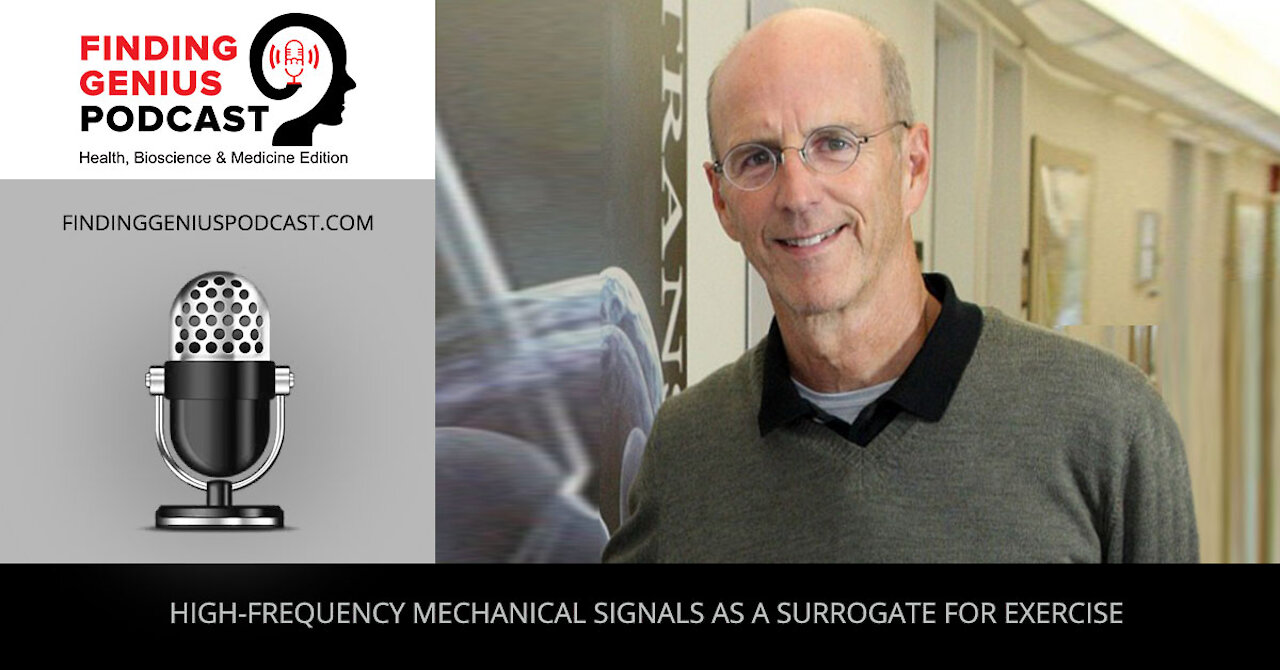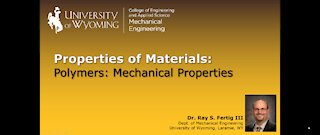Premium Only Content

High-Frequency Mechanical Signals as a Surrogate for Exercise
Astronauts in microgravity environments lose 2-3% of their bone mass per month. To put that in perspective, adults over the age of about 35 lose 2-3% of their bone mass per decade. Why is bone loss so accelerated in space? It all boils down to mechanical signals that are perceived and responded to by bone cells.
Tune in to discover:
Why people who are over the age of about 65 have such a high risk of bone fracture
Why professional tennis players have 30-35% more bone in their playing arm than their non-playing arm
Why bone fractures due to osteoporosis are so much more common in women than men
SUNY Distinguished Professor of Biomedical Engineering at Stony Brook University, Clinton Rubin, researches how mechanical signals or the lack thereof influence the musculoskeletal system, and how skeletal sensitivity to mechanical signals can be harnessed in the development of a non-drug therapeutic for bone wasting, obesity, and osteoporosis.
The understanding is that cells are mechanoreceptors, and that by delivering mechanical signals of one type or another, cells perceive those signals and respond in specific ways. For example, when you go for a run or play a sport, your bones resist the compressive force of your body weight, your bone cells pick up those stress signals, and in turn they signal other cells to produce more bone mass.
In the absence of these stress signals, such as in the case of a lack of exercise, whether from an illness, injury, or just plain laziness, your bone cells send signals to other cells for bone resorption—the opposite of bone building. This explains why astronauts in space lose bone mass as such a rapid rate: there is the complete absence of the compressive forces of weight, and therefore an absence of mechanical signals. All of this is the result of your bones tuning into the environment and trying to strike a balance between having too much bone mass and too little bone mass.
At the Center for Biotechnology Musculoskeletal Research Laboratory, Rubin and his team are trying to develop a mechanical regimen that would produce the benefits of exercise on the skeleton, without requiring actual exercise—thereby benefiting those with injuries, illnesses, or other conditions which preclude them from exercising.
How are they doing it? Rather than slamming the body with mechanical signals similar to those generated during exercise, which are at two cycles per second, they’re mimicking what the muscles do at a higher frequency of 30-50 cycles per second. Clinical studies have shown that by delivering these higher frequency signals to a person who is standing, it’s possible to stop bone loss and increase bone growth in those with osteoporosis. In effect, they’ve found a surrogate for exercise, at least in terms of the beneficial effects it has on the skeletal system.
For the details on all this and more, tune in, and visit http://www.bme.stonybrook.edu/labs/crubin/.
Available on Apple Podcasts: apple.co/2Os0myK
-
 0:33
0:33
FGP
16 days ago $0.01 earned♻️ Unmasking Plastic Recycling Realities 🌍✨
461 -
 1:08
1:08
DKLA
3 years agoMechanical bull
2411 -
 16:07
16:07
The Database Channel
3 years ago $1.54 earnedDatabase exercise 3
868 -
 25:17
25:17
The Database Channel
3 years ago $1.62 earnedDatabase exercise 2
984 -
 12:26
12:26
The Database Channel
3 years ago $0.18 earnedDatabase exercise 1
3541 -
 2:03
2:03
khan55
3 years agoExercise two
63 -
 0:59
0:59
JustMe508
4 years agoMechanical Hallucination
57 -
 11:55
11:55
The Database Channel
3 years ago $0.28 earnedDatabase exercise 4, part 2
446 -
 38:04
38:04
The Database Channel
3 years ago $0.21 earnedDatabase exercise 4, part 3
433 -
 10:34
10:34
ME 3450: Properties of Materials
4 years agoPolymers - Mechanical Properties
46